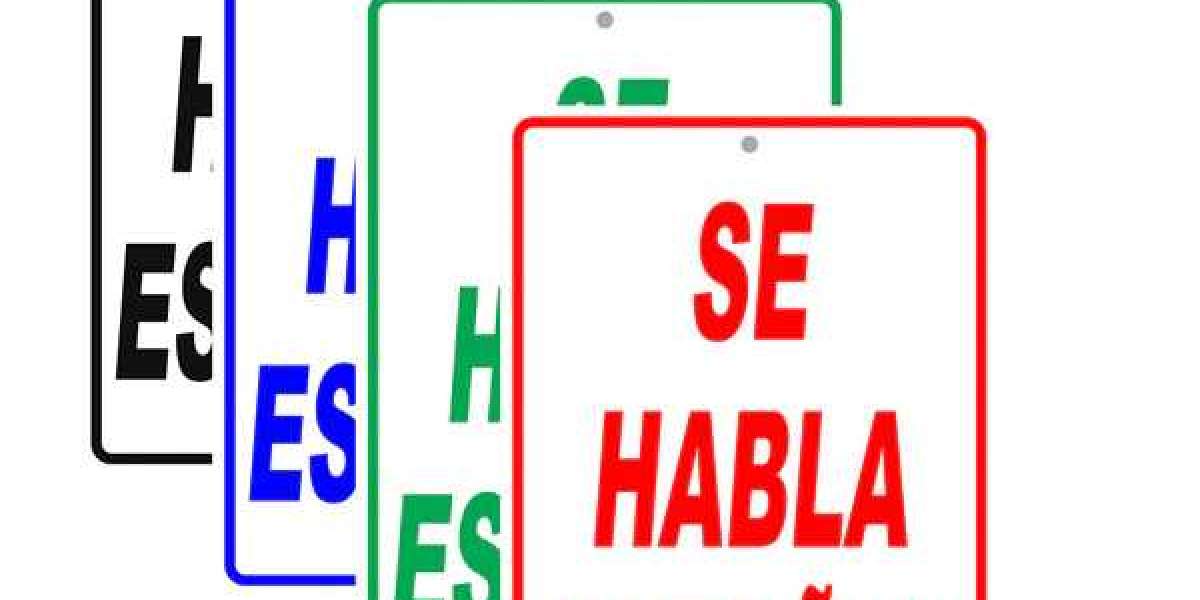Introduction
In today's multicultural and diverse world, effective communication across language barriers is essential. Language plays a crucial role in connecting people from various backgrounds, fostering understanding, and promoting inclusivity. The "Se Habla Español" sign is a powerful symbol of linguistic diversity and an invitation to bridge language gaps. This article delves into the significance of the "Se Habla Español" sign, its historical background, its role in promoting inclusivity, and the broader implications of language diversity in contemporary society.
The Origins of the Se Habla Español Sign
The "Se Habla Español" sign, which translates to "Spanish Spoken Here" in English, has its roots in the United States, a country known for its diverse population. Spanish, as a widely spoken language in the U.S., plays a significant role in the nation's linguistic landscape. The origin of these signs can be traced back to the early 20th century when a surge in immigration from Spanish-speaking countries began.
During this period, numerous Spanish-speaking individuals, primarily from Mexico and Puerto Rico, arrived in the United States seeking better economic opportunities and a new life. However, they often faced linguistic barriers that made assimilation challenging. In response to this, businesses, particularly in areas with significant Hispanic populations, started using "Se Habla Español" signs to signal that they could cater to Spanish-speaking customers.
The "Se Habla Español" sign became a symbol of inclusion and an acknowledgment of the diverse linguistic tapestry of the United States. It provided a sense of belonging to Spanish-speaking individuals and made them feel more welcome and valued in their adopted homeland.
Promoting Language Inclusivity
The "Se Habla Español" sign has evolved over the years and now serves multiple purposes beyond its initial intention. One of its primary roles is promoting language inclusivity. By displaying this sign, businesses and organizations signal their commitment to serving diverse communities, fostering a welcoming atmosphere for individuals who speak Spanish as their primary or preferred language.
In an increasingly globalized world, the importance of accommodating various languages cannot be overstated. The "Se Habla Español" sign is an embodiment of this principle. It demonstrates the recognition of linguistic diversity, which goes beyond just Spanish. The presence of such signs encourages people of all linguistic backgrounds to feel comfortable and valued, knowing that their language needs will be accommodated.
Today, the "Se Habla Español" sign is not limited to Spanish-speaking businesses or communities. Many organizations, including hospitals, government offices, educational institutions, and retail stores, recognize the importance of embracing linguistic diversity. They display these signs in multiple languages to ensure that everyone, regardless of their native tongue, can access their services and communicate effectively.
In an increasingly interconnected world, the importance of multilingualism extends beyond community businesses. Even on a national level, governments and institutions have recognized the significance of catering to diverse language needs. For example, in the United States, government agencies often provide vital information and services in multiple languages, including Spanish, to ensure that all residents have equal access to essential resources.
The "Se Habla Español" sign is, therefore, a symbol of inclusivity, an invitation for individuals to engage with businesses and institutions, and an assurance that their language needs will be met. This approach not only benefits the consumers but also enhances the reputation and success of organizations that prioritize language inclusivity.
The Evolution of "Se Habla Español" in Modern Society
Over the years, the "Se Habla Español" sign has evolved to reflect the changing demographics of the United States. The 21st century has witnessed a significant increase in the number of Spanish speakers in the country. Spanish has become one of the most widely spoken languages, with millions of bilingual and Spanish-dominant speakers. Consequently, the sign has gained even more prominence in American society.
The modern "Se Habla Español" sign is not only a message for Spanish-speaking individuals but also a symbol of appreciation for the rich tapestry of languages and cultures present in the United States. It serves as a reminder of the importance of cultural and linguistic diversity, not just within the Hispanic community but throughout the nation.
In a society where globalization has brought people from all corners of the world, the "Se Habla Español" sign has inspired similar signs in various languages. This proliferation of language-inclusive signs demonstrates a collective recognition of the power of language in building bridges across cultures.
Implications of Language Diversity
The "Se Habla Español" sign is more than just a message or a symbol; it highlights the broader implications of language diversity in contemporary society. Language is a fundamental aspect of culture, identity, and community. Recognizing and embracing linguistic diversity has far-reaching consequences that extend beyond simple communication.
- Fostering Cultural Exchange
Language is often a gateway to understanding culture. When businesses and institutions make an effort to accommodate diverse languages, they are indirectly encouraging cultural exchange. They create an environment where individuals from different backgrounds can share their experiences, traditions, and values. This not only enriches the lives of individuals but also contributes to the multicultural fabric of society.
- Promoting Social Harmony
Language inclusivity plays a pivotal role in promoting social harmony and reducing linguistic barriers. It helps to bridge gaps and create a sense of unity among diverse communities. The "Se Habla Español" sign, along with similar signs in different languages, contributes to social cohesion by sending a clear message: everyone is welcome, and everyone's voice matters.
- Economic Benefits
The "Se Habla Español" sign has economic implications as well. By catering to Spanish-speaking customers, businesses can tap into a growing market segment. In the United States, the Hispanic population is one of the fastest-growing demographic groups, and their purchasing power is on the rise. By offering services in Spanish, businesses can expand their customer base and increase revenue.
Moreover, language inclusivity promotes tourism and international trade. When visitors and international partners see signs like "Se Habla Español" or equivalents in other languages, it signals that the host country is open and welcoming, making it more attractive for travel and business opportunities.
- Education and Empowerment
Language inclusivity extends to educational institutions. Schools and universities that embrace linguistic diversity create an environment where students from various backgrounds feel valued and empowered. Language programs, multicultural events, and support services for non-native English speakers contribute to a more inclusive and enriching educational experience.
Conclusion
The Se Habla Español Sign serves as a powerful symbol of language inclusivity and cultural diversity in the United States. It has evolved from its origins as a practical tool for businesses to a statement that transcends linguistic boundaries. Today, it embodies the recognition of the importance of embracing and celebrating linguistic diversity.
In a world that is becoming increasingly interconnected, the significance of language inclusivity cannot be underestimated. The "Se Habla Español" sign, along with its counterparts in other languages, is a reminder that language is a bridge, a source of cultural enrichment, and a catalyst for social harmony. It reflects the broader implications of language diversity in contemporary society, from fostering cultural exchange and social cohesion to driving economic growth and empowering individuals.
As we move forward in an ever-diversifying world, the "Se Habla Español" sign, and similar signs in various languages, continue to stand as beacons of inclusivity and open communication, inviting us all to celebrate the beautiful mosaic of languages and cultures that make up our global community. By embracing linguistic diversity, we can create a more inclusive and interconnected world that values every individual and their unique background.
In conclusion, the "Se Habla Español" sign, with its rich history and evolving significance, stands as a testament to the power of language in our society. It goes beyond being just a sign; it represents a commitment to inclusivity, a recognition of the importance of cultural diversity, and an invitation to build bridges across language barriers. In an era where the world is becoming increasingly interconnected, these signs remind us of the beauty of linguistic diversity and its profound impact on our daily lives. They inspire us to celebrate our differences and work together to create a more inclusive and harmonious global community where everyone's voice is heard and valued.
As we encounter these signs in our neighborhoods, businesses, and institutions, let us remember the underlying message they convey: "We Speak Your Language." This message serves as a beacon of hope, reminding us that despite our differences, we can always find a way to communicate, connect, and understand one another. The "Se Habla Español" sign, along with similar signs in other languages, encourages us to embrace the rich tapestry of human language and culture that makes our world so wonderfully diverse.



